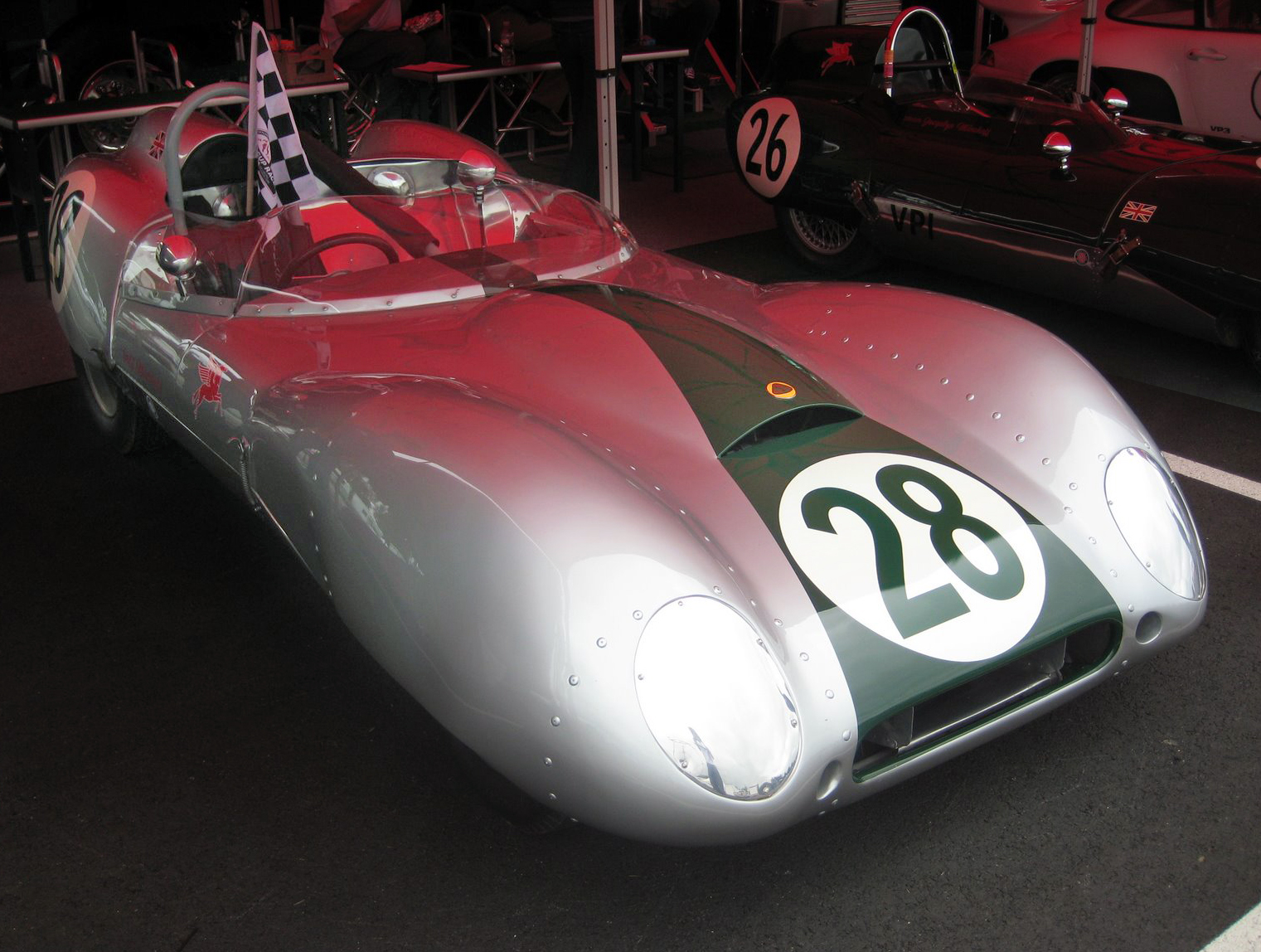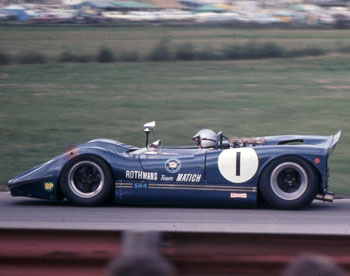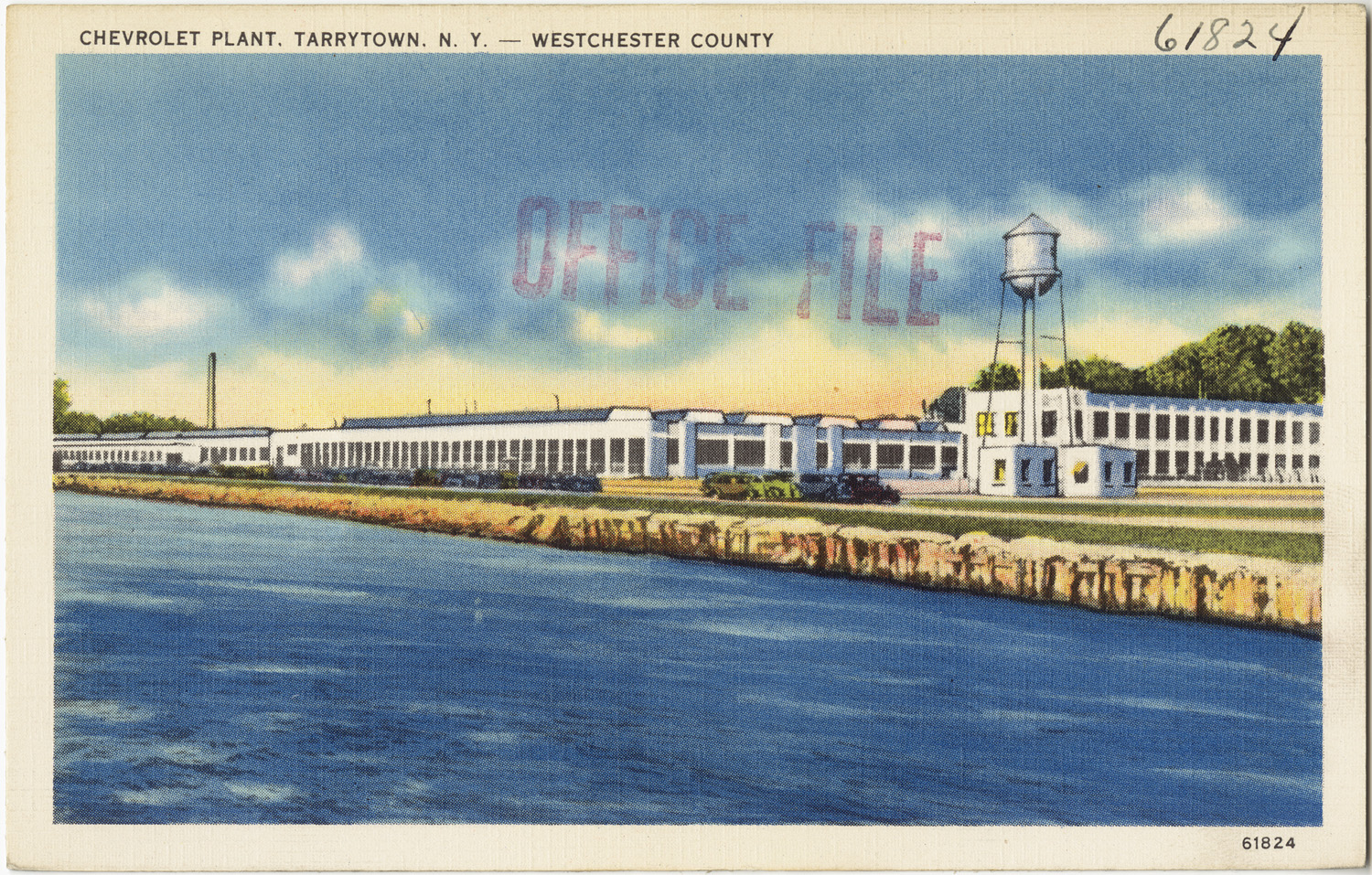|
1960 Australian Grand Prix
The 1960 Australian Grand Prix was a motor race held at Lowood in Queensland, Australia on 12 June 1960. The race, which was run to Formula Libre, had 16 starters. It was the twenty fifth Australian Grand Prix.''25th Australian G.P. at Lowood'', Australian Motor Sports, July 1960, pages 252 to 254 Alec Mildren won his only AGP, which was also the second AGP victory for a rear-engined racing car. Mildren eschewed the more usual Coventry Climax FPF engine in favour of a Maserati sports car unit to power his Cooper T51, one of many competitors at the time who tried sports car engines in racing car chassis. Davison's Aston Martin DBR4 too had a sports car engine replacing the 2.5-litre powerplant, this being 3.0 litre unit from a DBR1.John B. Blanden, Historic Racing Cars in Australia, 1979, p. 41 Classification Results as follows. Notes * Attendance: 25,000 *Pole position: Alec Mildren - 1'45.9 *Fastest lap: Lex Davison - 1'44.0, 97.7 mph, new lap record Ref ... [...More Info...] [...Related Items...] OR: [Wikipedia] [Google] [Baidu] |
1960 Australian Drivers' Championship
The 1960 Australian Drivers' Championship was a CAMS sanctioned national motor racing title for driversPast Title Winners, 1980 CAMS Manual of Motor Sport, page 56 of Formula Libre cars. The title was contested over a seven race series with the winner awarded the 1960 CAMS Gold Star.Championship Points, 1960: 1961 CAMS Manual of Motor Sport, page 51 It was the 4th Australian Drivers' Championship. The series was won by Alec Mildren of the Australian Capital Territory, driving his Maserati powered Cooper T51.The Early CAMS Gold Star Series 1957-1970 Retrieved 17 December 2011 Mildren won four of the seven races, including the 1960 Australian Grand Pr ...
[...More Info...] [...Related Items...] OR: [Wikipedia] [Google] [Baidu] |
Aston Martin DBR1
The Aston Martin DBR1 was a sports racing car built by Aston Martin starting in 1956, intended for the World Sportscar Championship as well as non-championship sportscar races at the time. It is most famous as the victor of the 1959 24 Hours of Le Mans, Aston Martin's only outright victory at the endurance classic. It is one of only three cars in the 1950s to win both the World Sports Car Championship and Le Mans 24 Hours in the same year (the others being the Ferrari 375 Plus in 1954 and the Ferrari 250TR in 1958). In addition the six World Sports Car Championship victories was a record for any car in the 1950s and remained a record in the championship until surpassed by the Ferrari 250TR. The three consecutive triumphs in 1959 at the Nürburgring, Le Mans and the Tourist Trophy equalled the record set by the Ferrari 250TR with its three consecutive victories at the start of the 1958 season. In August 2017, car DBR1/1 was sold for a world record price for a British-made car ... [...More Info...] [...Related Items...] OR: [Wikipedia] [Google] [Baidu] |
Stan Jones (racing Driver)
Stanley Jones (16 March 1923 – 16 March 1973) was an Australian racing driver. Today better known as father of 1980 World Drivers' Champion Alan Jones, Stan was a prominent racing driver himself, racing mainly in the 1950s. He is one of eleven drivers to have won the Australian and New Zealand New Zealand ( mi, Aotearoa ) is an island country in the southwestern Pacific Ocean. It consists of two main landmasses—the North Island () and the South Island ()—and over 700 List of islands of New Zealand, smaller islands. It is the ... Grands Prix. Jones raced the Maybach Specials, the last of the great Australian built specials to remain competitive against the imported European Formula 1 cars, before racing a Maserati 250F. An amateur racer, his career declined along with the ability of his business interests (mostly car dealerships) to fund it. After two strokes Jones moved to London to be with his son Alan, and died just short of his 50th birthday. Career result ... [...More Info...] [...Related Items...] OR: [Wikipedia] [Google] [Baidu] |
Lotus 15
The Lotus 15 is a front-engine sports racing car designed by Colin Chapman of Lotus Cars, Lotus, built from 1958 until 1960. Series 1 The 15 is a two-seater, front-engine, rear wheel drive sports racer with an aluminium body over a space frame configuration. As opposed to the six cylinder Bristol Engine Company, Bristol 2L engine in its predecessor Lotus Mk.X, the Mk.15 was designed with a dry-sump, all aluminium, DOHC four cylinder Coventry Climax FPF engine of 1.5 to 2.5 Litre displacement built for Formula Two and Grand Prix motor racing, Grand Prix racing, mated to Lotus' own 5 speed sequential transaxle nicknamed 'Queerbox'. It was designed in 1957, and the production began in late 1957. The spaceframe was similar to Lotus Eleven except for the Chapman strut rear suspension with inboard brakes and the accommodations for a larger engine, which included a slightly (7.5 degrees) tilted engine mounting space on the plan view, shifted to the right of the centerline in the front a ... [...More Info...] [...Related Items...] OR: [Wikipedia] [Google] [Baidu] |
Frank Matich
Frank Matich (25 January 193511 May 2015) was an Australian racing car driver. A highly successful motor racing competitor in the 1960s and 1970s, Matich built his own range of Matich sports cars and open wheel cars, mainly to support his own career, but some cars found success with other drivers. In these and other makes he won five Tasman Series races, two Australian Grands Prix, the 1972 Australian Drivers' Championship and a number of other Australian motor racing titles. In April 1970, Frank Matich was appointed as a Director of Lambretta (Australasia) Pty Ltd, and was to assemble McLaren racing cars in the Lambretta site in Artarmon, Sydney. Matich, who suffered major electrical burns in a boating accident in 1973, retired from racing in 1974 in order to spend more time with his family and his business. His son Kris Matich became a leading Formula Ford Formula Ford, also known as F1600 and Formula F, is an entry-level class of single seater, open-wheel formu ... [...More Info...] [...Related Items...] OR: [Wikipedia] [Google] [Baidu] |
Coventry Climax FWA
Coventry Climax was a British forklift truck, fire pump, racing, and other specialty engine manufacturer. History Pre WW1 The company was started in 1903 as Lee Stroyer, but two years later, following the departure of Stroyer, it was relocated to Paynes Lane, Coventry, and renamed as Coventry-Simplex by H. Pelham Lee, a former Daimler employee, who saw a need for competition in the nascent piston engine market. An early user was GWK, who produced over 1,000 light cars with Coventry-Simplex two-cylinder engines between 1911 and 1915. Just before the First World War, a Coventry-Simplex engine was used by Lionel Martin to power the first Aston Martin car. Ernest Shackleton selected Coventry-Simplex to power the tractors that were to be used in his Imperial Trans-Antarctic Expedition of 1914. Hundreds of Coventry-Simplex engines were manufactured during the First World War to be used in generating sets for searchlights. Post WW1 In 1919, Pelham Lee acquired an existing comp ... [...More Info...] [...Related Items...] OR: [Wikipedia] [Google] [Baidu] |
MG Cars
MG is a British automotive marque founded by Cecil Kimber in the 1920s, and M.G. Car Company Limited was the British sports car manufacturer that made the marque famous. Best known for its open two-seater sports cars, MG also produced saloons and coupés, with engines up to three litres in size and 3.5L in the case of the MGB GT V8. The marque is now owned by Chinese state-owned automaker SAIC Motor Corporation Limited. MG cars had their roots in a 1920s sales promotion sideline of Morris Garages, a retail sales and service centre in Oxford belonging to William Morris. The business's manager, Cecil Kimber, modified standard production Morris Oxfords and added ''MG Super Sports'' to the plate at the nose of the car. A separate M.G. Car Company Limited was incorporated in July 1930. It remained Morris's personal property until 1 July 1935, when he sold it to his holding company, Morris Motors Limited. MG underwent many changes in ownership over the years. Morris's ... [...More Info...] [...Related Items...] OR: [Wikipedia] [Google] [Baidu] |
MG TC
The MG T-Type is a series of body-on-frame open two-seater sports cars that were produced by MG from 1936 to 1955. The series included the MG TA, MG TB, MG TC, MG TD, and MG TF Midget models. The last of these models, the TF, was replaced by the MGA. Although the design was similar to contemporary cars of the 1930s, it came to be considered outdated by the 1950s. The TF name was reinstated in 2002 on the mid-engined MG TF sports car. TA Midget The TA Midget replaced the PB in 1936. It was an evolution of the previous car and was wider in its track at and longer in its wheelbase at . The previous advanced overhead-cam inline-four engine was by then not in use by any other production car so it was replaced by the MPJG OHV unit from the Wolseley Ten, but with twin SU carburettors, modified camshaft and manifolding. The engine displaced just 1292 cc, with a stroke of and a bore of and power output was 50 hp (40.3 kW) at 4,500 rpm. The four-speed manual g ... [...More Info...] [...Related Items...] OR: [Wikipedia] [Google] [Baidu] |
Chevrolet
Chevrolet ( ), colloquially referred to as Chevy and formally the Chevrolet Motor Division of General Motors Company, is an Automotive industry in the United States, American automobile division of the American manufacturer General Motors (GM). Louis Chevrolet (1878–1941) and ousted General Motors founder William C. Durant (1861–1947) started the company on November 3, 1911 as the Chevrolet Motor Car Company. Durant used the Chevrolet Motor Car Company to acquire a controlling stake in General Motors with a reverse takeover, reverse merger occurring on May 2, 1918, and propelled himself back to the GM presidency. After Durant's second ousting in 1919, Alfred Sloan, with his Maxim (saying), maxim "a car for every purse and purpose", would pick the Chevrolet brand to become the volume leader in the General Motors family, selling mainstream vehicles to compete with Henry Ford's Ford Model T, Model T in 1919 and overtaking Ford Motor Company, Ford as the best-selling car in the ... [...More Info...] [...Related Items...] OR: [Wikipedia] [Google] [Baidu] |
Lotus Eleven
The Lotus Eleven is a sports racing car built in various versions by Lotus from 1956 until 1958. The later versions built in 1958 are sometimes referred to as Lotus 13, although this was not an official designation. In total, about 270 Elevens of all versions were built. Design and performance The Eleven was designed by Colin Chapman and fitted with a sleek body designed by aerodynamicist Frank Costin. Its top version, dubbed ''Le Mans'', was fitted with a 1100 cc (67ci) Coventry Climax FWA engine ;occasionally with a 1500 cc (92ci)Setright, L.J.K, "Lotus: The golden mean", in Northey, Tom, ed. World of Automobiles (London: Orbis, 1974), Volume 11, p.1224. Coventry Climax FWB engine), mounted in the front of a tubular space frame. The Eleven featured a De Dion tube rear axle and Girling disc brakes. Fully loaded, the car weighed only about . Versions for a 1100 cc (67ci)Setright, p.1224. Climax engine (''Club'') and a 1172 cc (72ci) Ford engine (''Sport'') were also produced; ... [...More Info...] [...Related Items...] OR: [Wikipedia] [Google] [Baidu] |
Cooper T43
The Cooper T43 was a Formula One and Formula Two racing car designed and built by Cooper Car Company for the 1957 Formula One season, first appearing at the 1957 Monaco Grand Prix in a works car for Jack Brabham. The T43 earned a significant place in motor racing history when Stirling Moss drove a Rob Walker Racing Team T43 to win the 1958 Argentine Grand Prix, the first World Drivers' Championship win for a mid-engined car. Despite this achievement, the car was superseded almost immediately by the T45. The T43's last appearance in a World Championship event was the 1960 Italian Grand Prix. Bob Gerard purchased a T43 chassis and fitted it with a Bristol engine. This car was given an official Cooper works number as the T44. Complete Formula One World Championship results ( key) (results in bold indicate pole position, results in italics indicate fastest lap) The World Constructors' Championship was not awarded before 1958. Shared drive. No points scored by the T43 as i ... [...More Info...] [...Related Items...] OR: [Wikipedia] [Google] [Baidu] |
Maserati 250F
The Maserati 250F was a racing car made by Maserati of Italy used in '2.5 litre' Formula One racing between January 1954 and November 1960. Twenty-six examples were made. Mechanical details The 250F principally used the SSG 220 bhp (@ 7400 rpm) 2.5-litre Maserati A6 straight-six engine, ribbed 13.4" drum brakes, wishbone independent front suspension, a De Dion tube axle, Borrani 16" & 17" wheels and Pirelli Stella Bianca tyres. It was built by Gioacchino Colombo, Vittorio Bellentani and Alberto Massimino; the tubular work was by Valerio Colotti. A streamlined version with bodywork which partially enclosed the wheels (similar to the 1954 Mercedes-Benz W196 "Typ Monza") was used in the 1956 French Grand Prix.Grand Prix Data Book, David Hayhoe & David Holland, 2006 Racing history Maserati works team Aintree 1957.jpg, Works team at Aintree, 1957 Fangio & Maserati 250F.jpg, Fangio and 250F Maserati 250F Monoposto Competizione - 52029916773.jpg, Maserati 250F at the Umberto Panini m ... [...More Info...] [...Related Items...] OR: [Wikipedia] [Google] [Baidu] |
.jpg)





.jpg)


